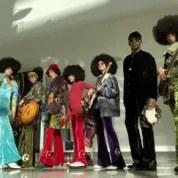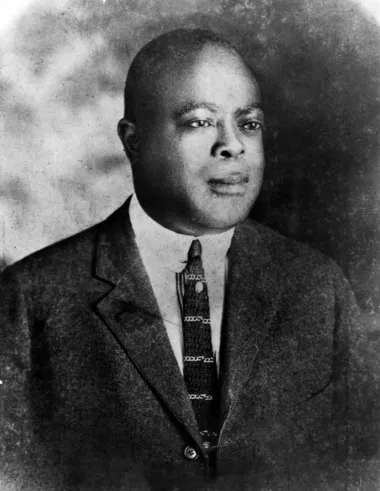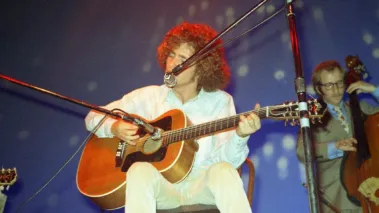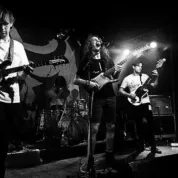
The art of improvisation in music is a testament to spontaneous creativity and artistic collaboration. It is within this niche that musicians like Tim Buckley found their vibe, bridging the gap between structured composition and exploration. Buckley's performance of "Gypsy Woman" is an empowering example of musical improvisation in action, harnessing the raw power of on-the-spot creativity. But improvisation isn't limited to only the daring and experimental. Its principles can enrich performances of musicians at all levels, and across a multitude of instruments. From guitar rockstars to piano virtuosos, the art of musical improvisation can elevate any musician who dares to venture beyond the notes on the page.
A Brief History of Musical Improvisation
When bands are performing live, musical improvisation can occur in two ways: collectively or individually. Collective improvisation, a term that evokes a sense of spontaneity and collaboration, is a vital aspect of musical performance where all members of an ensemble improvise simultaneously. Unlike solo improvisation, which showcases individual creativity, musical improvisation is a harmonious dialogue, a sonorous conversation where the musical discourse is shaped by the ebb and flow of collective intuition.
This technique's roots stretch back to the early 20th century, in the vibrant streets of New Orleans, a city renowned as the cradle of jazz. Dixieland, or traditional New Orleans jazz, is famous for its interweaving counter-melodies, an early example of collective improvisation. Bands such as King Oliver's Creole Jazz Band became the torchbearers of this intricate musical conversation, where musicians expressed themselves freely within the group, fostering an intense, dynamic musical environment that would profoundly influence future generations.

As jazz evolved through the eras, from swing to bebop and beyond, the practice of collective improvisation waxed and waned. The bebop era, dominated by luminaries like Charlie Parker and Dizzy Gillespie, pivoted towards complex solo improvisations. But regardles, the spirit of musical improvisation remained alive in the underlying musical dialogue.
This innovative technique extended its influence beyond the realm of jazz. The mid-to-late 20th century saw rock and pop musicians adopt musical improvisation, leading to profound shifts in these genres. The Grateful Dead, a band synonymous with long, improvisational "jam" concerts, adopted this method to create intricate, free-form musical narratives that often lasted hours.
Similarly, in the late 1960s, Tim Buckley emerged as a significant figure in the music scene, wielding musical improvisation as a vital tool in his creative arsenal. His performances, characterized by a seamless blend of jazz, folk, and rock elements, were testament to the power of improvisation. This unique approach allowed Buckley to push musical boundaries, transforming the conventional music landscape and influencing the generations to follow.
In the 1980s and beyond, bands like Phish carried the torch, furthering the art of not only solo improvisation, but complex collective improvisation as well, carving their own unique musical identity. Their free-form, genre-bending performances echoed the ethos of their musical predecessors, continuing the legacy of collective improvisation.
The history of musical improvisation is a testament to the power of collaboration and spontaneity in music. It transcends eras, genres, and musical styles, holding an integral position in our musical heritage and continuing to inspire and influence musicians today.
Elevate Your Live Performance with Musical Improvisation
Introducing musical improvisation into live performances can bring an electrifying element of unpredictability and intimacy. It allows musicians to connect deeply with each other, their music, and their audience, establishing a unique and visceral live experience that premeditated performances often cannot replicate.
When done well, musical improvisation is a conduit for the real-time exploration of musical ideas. It fosters an environment where the musicians, free from the constraints of predetermined arrangements, can create in the moment, responding dynamically to the audience's energy and each other's musical cues. This experience can often feel magical, both for the performers and the audience, as they together navigate uncharted musical territories.
Furthermore, musical improvisation enables musicians to demonstrate their skill and versatility in a live setting, as they constantly adapt, listen, and react to their bandmates' ideas. It serves as an exciting showcase of their musical prowess and deep understanding of their art.
However, this improvisational freedom must be tempered with caution. An unsuccessful musical improvisation can result in a chaotic and disjointed performance. Musicians need to be deeply attuned to each other, maintaining a delicate balance between individual expression and collective harmony. Without this mutual understanding and respect for the musical conversation, the performance can lose its coherence and disengage the audience.
Therefore, while musical improvisation can greatly elevate a live performance, it requires a high level of musicianship, deep mutual understanding, and a willingness to take creative risks. When approached with skill and caution, musical improvisation can transform a live performance into an unforgettable, shared musical journey.
When the general population thinks of "improvisation in music", the first thing that often comes to mind is jazz. After all, improvisation is a defining component of jazz. The genre was created from it. Although this is a very reasonable thought process, improvisation is actually present in all music, just as it is in all creative facets of life.
Tim Buckley's "Gypsy Woman" is a great example of this. While this ambiguous haze of a folk song is heavily inspired by the West Coast style of cool jazz, it is also indicative of the "jam-sesh" era of the 60s as well.
The Man Behind This Melding of Worlds
Tim Buckley was an American composer and rock vocalist who first emerged on the music scene in 1967. His eclectic style merged progressive jazz, psychedelic rock, and folk music, and was either constantly pushing boundaries, being recklessly inconsistent, or doing both simultaneously-- depending on how you look at it.
After two popular albums that indulged in the psychedelic sounds of '66 and '68, Buckley began to explore his interest in jazz on his third studio album, Happy Sad. The songs are written in a long-form style and incorporate instruments like the vibraphone, a percussion instrument used primarily in jazz stylings.
Gypsy Woman, the 12 Minute Improvisation
Gypsy Woman in particular, is twelve minutes of spell-binding improvisation strung together by Buckley's howling, at times incomprehensible, vocals. This track is definitely not everyone's cup of tea; it is melodically and rhythmically challenging, and acoustically outside of the conventional music bubble. However, there is an argument to be made that this type of music is more of a testament to how it was created rather than the product itself.
Listening to "Gyspy Woman", there is a raw energy in how the ensemble feeds off of each other. It embodies the idea of play: the only limitations being those of the instruments and musicians themselves. The factor of shared anticipation between the performers and audience differentiates listening to an improvised record compared to a fully produced one. This tension is palpable through the way that the drummer hesitantly begins driving the beat awaiting Buckley to finish his vocal riff, or through the bass gradually diversifying its own line as the piece takes off.
In this spirit of play, there is only collaboration. Even Buckley, arguably the star of this song, uses his vocals to add texture to the ensemble rather than draw attention away from the instrumentation. Without this genuine collaboration, successful improvisation is next to impossible.
A musician's ego and urge to compete with their partners would be only another limitation that restricts creativity, therefore hindering the cooperative process of improvisation. In this vein, improvisation in music differs from its counterpart in comedy. For example, in Whose Line Is it Anyway, there is both an illusion of the game and the reality of it. Although there is no real winner at the end, the comedians still act independently while on stage together, and there is a spirit of competition that pushes the scene to its funniest extremes, each actor trying to out-joke the other.
So what makes improvisation in music any different? There are still people on stage together who act independently and must have egos to some degree. While this is true, it comes back to what was said previously, that this type of music is more of a testament to how it was created rather than the product itself. Each musician is getting more out of the experience than the end product. In comedy, the goal is to hit the punch line and make the audience laugh. With this type of music, there is no goal in mind, hence why Buckley's songs can seemingly go on forever.
The feeling of competition is alleviated as there is nothing that can be attained, not even the faint feeling of superiority from landing the last guitar strum. In seeing where the song takes them and enjoying the experience itself, the musicians can revel in the pure playfulness that is collaborative improvisation.
Analyzing music can seem futile at times. Everything is quite subjective and up for interpretation, and the process that ultimately leads to the final product will always contain gaps of information as the artist is the only one who can truly understand their point of view. Regardless of this, the theory behind improvisation can help to fill in these gaps so that art can be seen not just for the final result, but for the creative journey taken to reach it as well.
How to Improvise on Guitar
The guitar, with its dynamic tonal range and expressive capabilities, has long held the position of a lead instrument in many improvisation-heavy musical styles, from blues and jazz to rock. Its popularity in improvisation is attributed not only to its rich sound but also to the immediacy with which it allows for creative expression.
Improvisation on guitar is not just about playing random notes but involves a deeper understanding of scales, modes, and chord progressions. The Pentatonic scale, in particular, is a great starting point for guitarists looking to delve into improvisation. As a five-note scale used heavily in blues and rock, it offers a simple yet versatile foundation for creating melodies.
Guitarists seeking to improve their improvisation skills should also work on their listening skills. Listening and reacting to the other musicians' cues is a fundamental part of musical improvisation. The better a guitarist can listen and respond to their fellow musicians, the richer and more dynamic their improvisations will be.
Experimentation is key in improvisation. Trying out different chord voicings, strumming patterns, and incorporating techniques such as bends, slides, and hammer-ons can add color and personality to improvisations.
Lastly, practice and patience are essential. Improvisation is a skill honed over time. Regularly jamming with other musicians can provide invaluable experience and improve one's improvisation capabilities significantly.
How to Improvise on Piano
Piano improvisation, similar to its guitar counterpart, offers a deeply rewarding avenue for creative expression. However, the approach to improvisation varies between these two instruments due to their structural differences.
The piano's broad pitch range and polyphonic capabilities present pianists with a vast canvas to paint their musical ideas. This expansive potential can be harnessed through a well-rounded understanding of scales, chords, and rhythms. For beginners, mastering major and minor scales is a significant first step towards successful improvisation.
Knowledge of chord progressions is essential for improvisation on the piano. Familiarity with the Circle of Fifths, for instance, can help pianists understand the relationship between different keys and how chords flow into one another, providing a solid framework for their creative explorations.
An excellent way to kickstart piano improvisation is by playing around with simple melodies, altering notes, rhythm, and dynamics to make it uniquely theirs. Playing along with backing tracks in different styles can also be beneficial, allowing pianists to practice improvisation in various musical contexts.
Developing good hand independence is another crucial aspect. This allows for greater flexibility, enabling pianists to maintain the rhythm or harmonic structure with one hand while improvising melodies with the other.
Similar to guitar improvisation, active listening plays a key role. It's essential to be receptive to the musical conversation happening during a performance and respond accordingly. Regular practice in diverse musical settings will help in developing this instinct.
In sum, piano improvisation, while challenging, can be incredibly gratifying. With a solid understanding of musical theory, a willingness to experiment, and lots of practice, pianists can significantly enhance their improvisation skills.
Final Thoughts
The world of musical improvisation uncovers an artistic domain where spontaneity and collaboration are paramount. This is where the echoes of past masters, like Tim Buckley, resonate strongly, inspiring contemporary musicians to embrace the uncertainty and thrill that comes with improvisational performance. Whether wielding a guitar, commanding a piano, or any other instrument, understanding and mastering musical improvisation opens a door to unexplored dimensions of musical expression. Ultimately, musical improvisation is more than a musical technique; it is a philosophy that encourages musicians to immerse themselves in the moment, respond intuitively to their fellow musicians, and create art that is truly in the here and now.







Leave a Reply!
NGL... I aint never heard of this guy
My Dad was such a huge Tim Buckley fan. I learned so much because of Gypsy
Tim Buckly takes me back my dude. Preciate the blast to the past :D